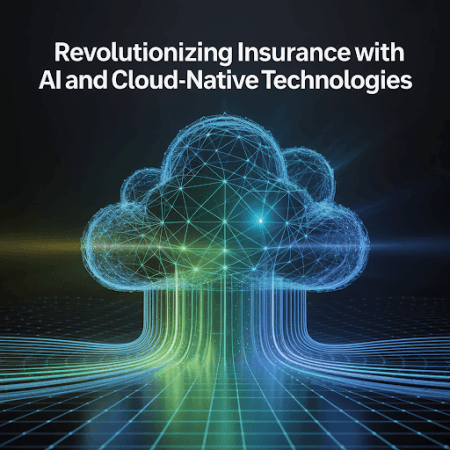
In the evolving landscape of insurance, technology is no longer a support system; it is the driving force behind transformation. The convergence of cloud-native architectures and AI capabilities is fundamentally reshaping how insurance enterprises operate. In a recent article by Avinash Terala, the groundbreaking innovations in these areas are examined, revealing how they are poised to change the future of the insurance sector.
Embracing the Cloud-Native Revolution
The adoption of cloud-native architectures is transforming the insurance industry by replacing rigid, monolithic systems. This shift enables greater agility, scalability, and real-time data processing. By leveraging cloud-native solutions, insurers can improve resource management, enhance flexibility, and integrate AI directly into business processes. Microservices architecture enhances efficiency, responsiveness, and adaptability, driving innovation in the sector.
The Power of Microservices in Modern Insurance Systems
The shift to microservices in insurance systems enhances scalability, flexibility, and operational efficiency. By breaking down monolithic applications into smaller, deployable services, insurers can adapt quickly to changes, improving policy management, claims processing, and customer service. Tools like service meshes and Kubernetes simplify integration and communication, ensuring seamless orchestration across services for greater agility.
Real-Time Insights with Event-Driven Architecture
Event-Driven Architecture (EDA) enables real-time data processing in insurance, replacing traditional batch systems. It allows events like policy changes and claims submissions to trigger instant updates, improving customer experience, risk assessment, and fraud detection. EDA also enhances scalability and performance during high-demand periods, such as natural disasters or financial crises, ensuring efficient operations.
AI-Powered Risk Management and Personalization
AI is revolutionizing insurance by improving risk assessment, underwriting, claims processing, and fraud detection. By analyzing vast data types like text, images, and sensor data, AI models enable faster, more accurate decisions. Embedded in microservices, these intelligent systems enhance efficiency, accuracy, and reliability in insurance operations.
The Role of Data Lakehouses in Data Management
As insurance data grows, the Data Lakehouse model combines the flexibility of data lakes with the structure of data warehouses, offering a robust solution for managing both historical and real-time data. By integrating diverse sources like claims, policies, and customer interactions, insurers gain actionable insights, support AI models, and ensure continuous system improvement.
Security at the Forefront: Zero Trust and Blockchain
As insurers adopt more sophisticated technologies, ensuring the security of sensitive data is paramount. Zero Trust architecture, which eliminates traditional perimeter-based security models, is gaining traction in the insurance sector. By continuously verifying users and devices at every point of access, Zero Trust models significantly reduce the risk of breaches and unauthorized access. Additionally, the use of blockchain for claims processing and reinsurance offers a transparent, immutable ledger, enhancing trust and reducing fraud. These technologies, when combined, offer a security-first approach that is crucial in an industry as regulated as insurance.
Looking Ahead: Future Innovations in Insurance Technology
The insurance industry is on the brink of further technological advancements that promise to revolutionize operations even more. Emerging AI models, such as multi-modal systems capable of analyzing text, voice, and images simultaneously, will improve fraud detection and customer interactions. Additionally, next-generation containerization strategies optimized for specific insurance tasks will enhance the efficiency of cloud-native systems. Predictive resource allocation, powered by AI, will further optimize cloud infrastructure, ensuring that insurance companies can anticipate and manage resource needs before they arise, minimizing costs and maximizing performance.
In conclusion, Avinash Terala's exploration of the cloud-native and AI-driven architectural frameworks highlights the transformative potential of these technologies within the insurance industry. As insurers continue to embrace these innovations, they will not only improve operational efficiency but also deliver better customer experiences and risk management capabilities. By adopting these cutting-edge frameworks, insurance enterprises are positioning themselves for success in a rapidly changing digital landscape.









